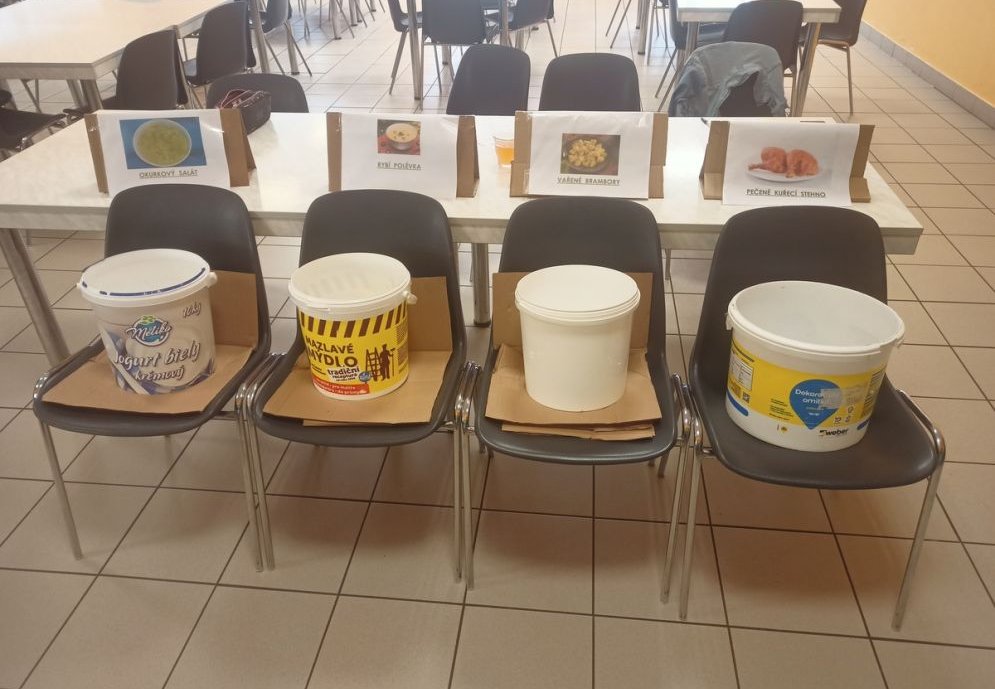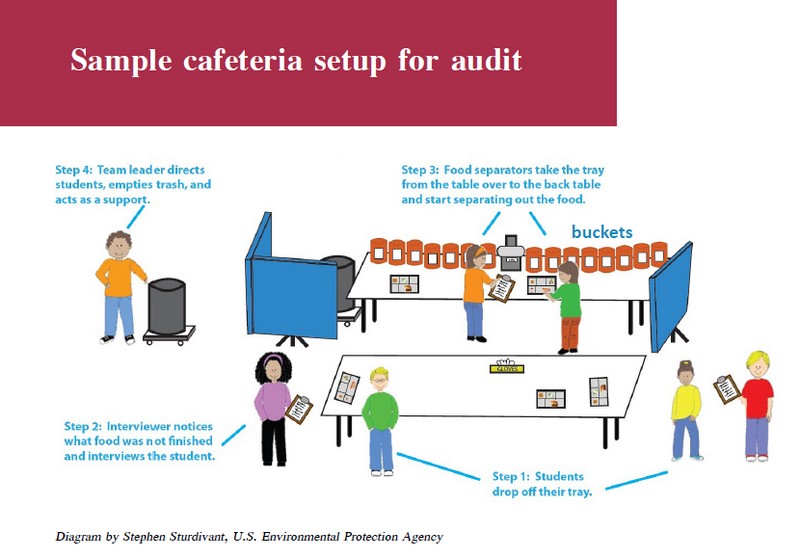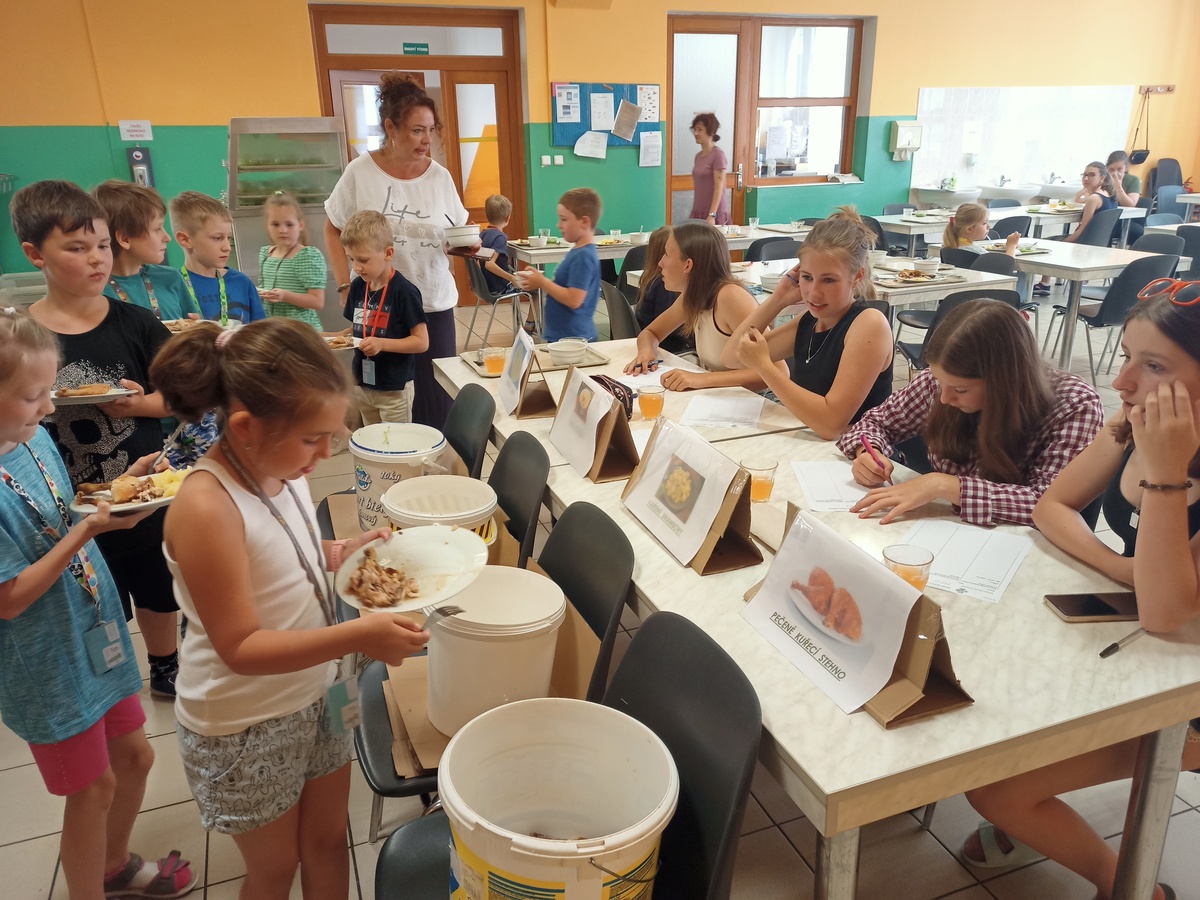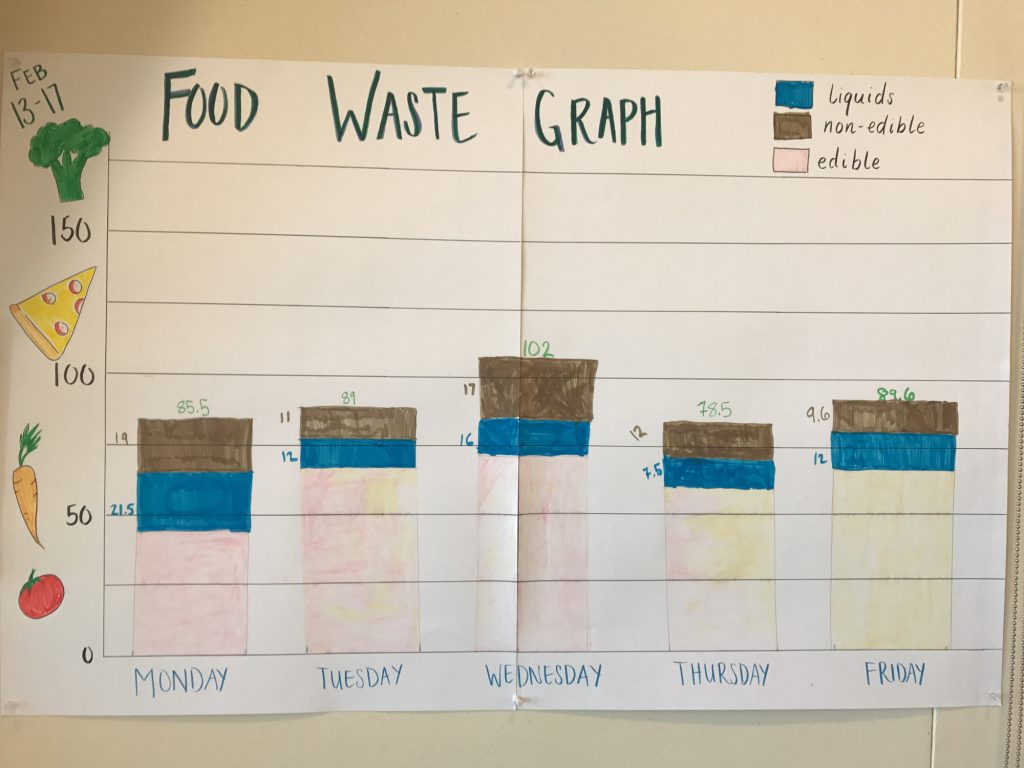

Food waste audit in the school canteen
A school canteen food-waste audit activity.
Lernergebnisse
After finishing this activity a student will have learned to
- understand the consequences of food waste on climate change
- understand how is food wasted along the food chain
- think about how to reduce food waste both at home and at school
- calculate the weight of food leftovers and graph the results
- create an action plan to reduce food waste in school
After an audit, schools will have a better idea of how and where to reduce food waste. Reducing food waste can help schools save money by reducing the cost of rubbish collection. Reducing food waste also reduces the stress we put on natural resources through production of uneaten food, while helping reduce greenhouse gas pollution.
Zeitaufwand
- Educate students: a few weeks
- Make an audit: at least a week every school semester
- Create an action plan: a few lessons
Werkzeuge, Materialien oder Ausstattung
- Food Waste Audit tools.
- Two tables for each checkpoint.
- Plastic waste bags for the "control" waste bins. They will make it easier to empty the bins as you fill them with waste.
- Waste bins. Select the appropriate number of containers according to the number of items on the menu.
- Large containers for emptying already checked waste items.
- Scales for weighing individual waste items.
- Cloths and ground cloths for ongoing cleaning.
- Pictures of the item to stick on the waste containers.
- Signage to direct students to the check stations.
- Pads, questionnaire forms and pencils for pupil interviewers.
- Forms for recording the weight of waste items.
- Gloves for pupils who will be separating waste.
Beschreibung der Aktivität
The aim of the activity is to reduce food waste in school canteens. A lot of food is wasted in school canteens. By making a few small changes, schools can reduce food waste and provide students with competences to become change makers in food waste reduction.
Implement these three steps to reduce the amount of food thrown away.
Step 1: Educate
To begin, students must first understand the scope of the problem. Which types of foods are being wasted most? Why are students not eating particular food items? Doing a student food waste audit in your school cafeteria will help answer all of those questions. Using various learning and methodological materials, teachers may integrate the topic into classroom learning activity, educate pupils on the topic of food waste and motivate them to make changes and become part of the solution.
Possible questions to ask:
- Do you know how much food is thrown away in the cafeteria?
- Do you know how much food is wasted in your country/in the EU/in the world?
- Can you explain the relationship between food waste and climate change? Food waste and hunger?
Step 2: Make the food waste audit
The main aim of the food waste audit is to find out why students are not eating certain foods and, based on the results, to make changes that will lead to students throwing away much less food.
Students, in cooperation with teachers, get involved in monitoring the amount and composition of waste in the school canteen. Data collection takes place one day to a week, students monitor and evaluate the amount and composition of discarded leftovers and find out the reasons for not finishing meals by their fellow students.
How to conduct a food waste audit
Team of student vollunters:
In cooperation with teachers and school cafeteria workers, create a team of students, which will conduct the audit of the food thrown away in the school cafeteria. Ideally, have four students for every 100 students eating in the cafeteria.
Space arragements:
There should be one separate audit station for every 200 students. An audit station usually consists of two tables. One table is where students drop off their trays and get interviewed by volunteers in order to get answers on why they did not finish the fooditems left on their tray. The second table is used for separating food items from trays into buckets after an interview. The buckets will eventually be weighed and recorded.
Decide how to direct students to the audit station. Put extra signs in the places where students normally throw away trash with arrows directing them to the audit station.
Food waste collection:
Decide which categories/food items will be collected, weighed, and analysed for the audit. The number of categories will vary from school to school. An audit in an elementary school may require five buckets, whereas a high schoolmay require 12 or more buckets because there may be more food choices. The more categories there are, the more useful theresults will be.
Make sure all food is accounted for in the respective categories so students won’t end up with an item without an assigned bucket.
Place pictures and names of the food items you want tocollect on each bucket.
Instructions for interviewers:
When students walk up with their trays, say “Hello,we are taking a survey, and we would like to ask for your input. I’m going to ask you about the food items left on your tray and record what you thought about them.” Look at their tray and mark down which food items they left unfinished (drink containers too). Make sure to write down the same name that is on the label on one of the collection buckets.
Mark each unfinished food item down on the log sheet (one item per line). For each item, ask the student “Can you tell us why you didn’t finish your [name of food]?”and write down what they say. Only give one main reason per item. Try to get an answer that can help staff fix the problem.
Timing:
It is ideal to conduct a food waste audit across a minimum two week period to help you to identify fluctuations between busy and slow periods. We encourage students to organise multiple food waste audits in a school year to engage each other in finding creative ways to make sure nutritious food ends up in hungry bellies and not into the trash can. However, if you are able to keep records for 12 months you can identify seasonal patterns and trends.
Communicate your results
Create a one-pager, handout, or multimedia communication piece to convey the results of the waste audit to the school community and beyond.
Use the pictures and/or videos you took during the audit to visually demonstrate what the audit looked like and how much waste was produced on audit day. Include pie charts to convey the results. Provide next steps in the action plan (see below) on how your school can reduce waste and what members of the school community can do to help.



Step 3: Create a SMART action plan
After studying the audit data, students and schools can develop and implement food-waste reduction strategies that make the most sense for their particular situation.
The audit will show students how much food is being thrown out of the school canteen each day. Students can compare the amount of waste thrown away with the weight of the raw materials used to prepare lunch to find out the proportion of food thrown away. The data can be used as a basis for educating students about the importance of reducing food waste.
Evaluate the data obtained and present the results to other pupils, teachers, cooks and parents. Conducting a food waste audit will help you to find out how you can implement changes to avoid food waste, helping to save money and the environment.
Set specific goals how to reduce food waste in your cafeteria: after making an audit and evaluating the current situation, the students create an action plan which sets specific goal to reduce the amount of canteen waste and strives to meet it. Students regularly monitor the situation by conducting food waste audits at least twice a year and publish results.
Look here for ideas and worksheets how to create an action plan.
Tipps, wie das Thema in den Lehrplan integriert werden kann
Mathematics:
Activities carried out by students during the audit, including project planning, data collection, data analysis and interviewing, can be integrated into the mathematics curriculum and other subjects.
- Measure food waste.
- Create and interpret graphs.
- Calculate the cost of food waste.
- Calculate the amount of fuel required to ship that wasted food from the farm to the school kitchen.
- Calculate how much water and other resources went into growing the wasted food.
Science:
- Climate change. Food rotting in landfill releases methane gas, a green-house-gas more potent than carbon dioxide.
- Plant biology. Learn about the lifecycle from seed to plant to compost.
- Biology of livestock. Discuss resources required to grow the food that we feed the animals that we eat.
- The ecosystem of a compost pile. Bugs, worms and bacteria break down food scraps into black gold.
Language:
- Writing. Pupils could write research papers on food waste, plastic waste, soil or ocean health, the food–environment connection and so on.
Art:
As part of an art lesson, ask pupils to express their feelings about food waste in an artistic or graphic way. The resulting work can be made into an exhibition in the school canteen in the form of poster: 'Take All You Want But Eat All You Take' or 'What Can Go in the Compost Bin' or 'Make Water Your Drink of Choice.'
Compost:
Does the school cafeteria already compost food scraps and food waste? If not, help them get started. But remember, composting food is a last resort. Prevent food waste first.
